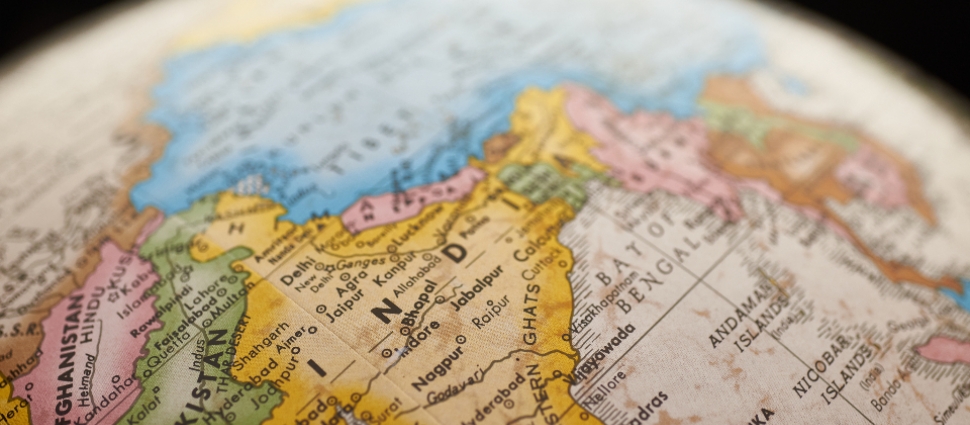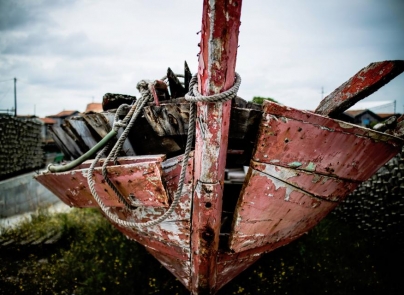Hope Masterton Waddell and His Missionary Team

Hope Masterton Waddell and His Missionary Team
In 1841, a group of missionaries in Jamaica read a copy of Sir T. Fowell Buxton’s seminal book, The Slave Trade and Its Remedy. One portion stood out more than others. According to Buxton, among the black Christians in the West Indies, “there may arise a body of men who will return to the land of their fathers carrying divine truth.”[1]
This message struck a chord. For a while, some Christians in Jamaica had been interested in God’s work in Africa. And many of these Christians were of African origins. In fact, the first missionary to Jamaica was a freed black slave, George Liele[2], who arrived on the island in 1783.
Hope Masterton Waddell, an Irish clergyman who had been serving with the Scottish Presbyterian mission in Jamaica, was interested in organizing a team of missionaries. This team included Waddell and his wife Jessie Simpson, their adopted son George, the English-born catechist and printer Samuel Edgerly with his wife, and two Jamaicans: Andrew Chisholm and Edward Miller.
Initially, the Missionary Society was not keen on sending these missionaries to Africa. So many had already lost their lives there, due to the harsh climate and unfamiliar diseases. The society called the plan “premature, displaying more zeal than judgment,” and “highly presumptuous.”[3]
Eventually, they relented, partially thanks to letters from King Eyamba V of Duke Town, King Eyo II of Creek Town, and other chiefs of the Calabar region, near the southeastern coast of present-day Nigeria, who promised the missionaries their welcome and protection in exchange for western education as a way to improve their economies.
Soon the missionary team began to receive much support. Robert Jamieson, a merchant from Liverpool, loaned his ship Warree and pledged 100 pounds per year toward sailing expenses. It was on this ship that the missionary team left for Calabar in 1846 (everyone but Jessie, who joined them three years later). This was, in a way, a reverse journey, since so many Nigerians had been taken to Jamaica in the previous century.
The Making of a Missionary
Waddell was born in Monaghan, Ireland on 14 November 1804. From a young age, he wanted to become a minister of the gospel, but he was discouraged in doing so because of a speech impediment. After working for a while as an apprentice to a druggist, however, he decided to study for the ministry. He was accepted as a candidate for missions in 1825 by the Scottish Missionary Society and was ordained in 1829 by the Edinburgh presbytery of the United Secession church.
He married Jessie Simpson the same year. Together, they traveled as missionaries to Cornwall, Jamaica, where they stayed for the next sixteen years. He had a fruitful ministry, but encountered some opposition after the slave rising of December 1831, which the authorities blamed on Christian teachings. Many churches were attacked and Waddell and other missionaries were threatened with expulsion. In spite of this, he remained in Jamaica until 1834, when he returned to Scotland due to his wife’s illness.
The Calabar Mission
At first, Waddell and his team established their mission in Duke Town. When more missionaries arrived in 1847, Waddell moved to Creek Town, where he worked closely with King Eyo II, who held the propitious nickname “Honesty.” Eyo showed some interest in the gospel and agreed to the destruction of idols and the closing of markets on the Lord’s Day. He also allowed the Sunday services to be held in his courtyard and acted as an interpreter for the people.
Waddell soon discovered some communication problems. For example, the Efik language didn’t have a word for “sin,” only a generic word for “bad thing.” “This want of a sense of sin, ignorance of sinfulness, lay in the way of our preaching the salvation of Jesus Christ,” he said. “On one point, however, they could understand me. Christ came to destroy the works of the devil, and witchcraft is one of the works of the devil. Though they had no idea of the devil in the scriptural sense, they stood in mortal terror of that secret supernatural power, or pretense of power. ... I preached to them Jesus Christ as the only and all-sufficient cure for this dreadful evil. Yea, he was more than a cure. He was the prevention of it.”[4]
Waddell was also able to persuade Eyo to curtail some local practice, such as human sacrifice and the murder of twin babies and their mothers (twin birth were seen as a result of a union with the devil). He also tried, with less success, to convince Eyo to discontinue the practice of polygamy. This was not just a matter of customs. Efik men kept their wives in harems with no rights and limited freedom. Waddell’s relationship with the local kings, however, became particularly strained when the mission began to offer protection to runaway slaves.
Convinced of the importance of education, Waddell set up some schools and learned the local language, Efik, which he used to write books and pamphlets. In the meantime, another Scottish missionary, the scholar and linguist Hugh Goldie, translated the Bible, a catechism, and some hymns into Efik. He also composed a two-volume Efik dictionary and an Efik grammar. Later, he wrote a history of the mission in Calabar. In the meantime, Edgerly set up the first commercial printing press in the country, publishing both Christian literature and educational pamphlets.
Waddell and the other missionaries had some disagreements, mostly after his leave of absence in 1853, when he discovered they had been more liberal than he had been in admitting new members into the church. This and other differences, largely due to his highhanded personality, combined with Waddell’s failing health, convinced him to retire to Dublin, Ireland, in 1858. He died in 1895. The same year, a school in Duke Town was named Hope Waddell Institute in recognition of his work.
Legacy
Eleven years after Waddell’s retirement, the ruling king Eyo VII, a grandson of Eyo II, wrote an affectionate letter to Waddell: “We of Creek Town are still having much interest in you as the one that had been first sent to open the way for the rest to walk thereby, with the same precious Gospel trumpet which is still sounding. I can but say, that I am now feel very happy to see that Calabar is not now entirely what it was in the days of our fathers before your coming, and during the time of your being among us. A great change has taken place ever since, through the power of the Gospel, and even until now, the evil customs are still gradually dying away, and my desire and hope is, that the whole work of Satan may be destroyed in Old Calabar. ... May we all meet in Heaven to part no more from each other.”[5]
The work Waddell started continued after his retirement. By 1860, much of this work was undertaken by Efik converts. More missionaries kept coming, both from Europe and Jamaica. These included, in 1876, the famous (and controversial) Mary Slessor[6], who left a huge impact on the advance of the gospel in Nigeria’s interior.
[1] Bengt Sundkler, Christopher Steed, History of the Church in Africa, Cambridge University Press, 2000, 238
[3] Hope Masterton Waddell, Twenty-nine Years in the West Indies and Central Africa: A Review of Missionary Woek and Adventure, 1829-1858, London: T. Nelson & Sons, 1863, 208
[4] Waddell, Twenty-nine Years, 279-280.
[5] Hugh Goldie, Memoir of King Ëyo VII of Old Calabar: a Christian king of Africa, United Presbyterian Mission Press, 1894, 35-36.





